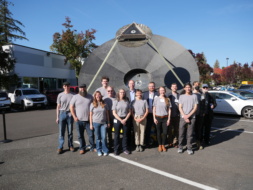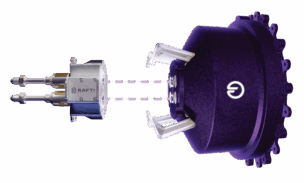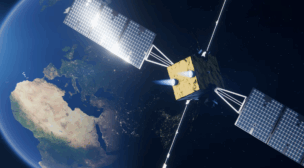The Space Force chose Northrop’s ($NOC) satellite propellant refueling system as a standard design for future military spacecraft, a decision that could shape the orbital servicing industry.
Background: Expensive spacecraft in high orbits often run out of gas before they become obsolete. Northrop Grumman’s Mission Extension Vehicles have demonstrated that grappling spacecraft to raise their orbits is a cost-effective way to keep them running when their tank is empty.
Northrop subsidiary SpaceLogistics’ next step is building a Mission Robotic Vehicle that will add refueling and other in-space services to the company’s toolkit, with a demo expected to launch in 2025. The company designed the Passive Refueling Module (PRM) for this vehicle, with financial backing from the Defense Industrial Unit (DIU).
Plug ‘n’ play: Space Systems Command must have liked the early reports, because its Engineering Review Board chose the PRM as its first preferred interface standard for refueling. That means the service can provide plans to satellite builders that want to use the component; other companies’ interfaces may receive similar approval. The Space Force also asked Northrop to design a Geosynchronous Auxiliary Support Tanker (GAS-T) that could provide regular top-offs to PRM-equipped satellites.
The move fits with a broader push among Space Force brass for vehicles that can fly freely in space—and the infrastructure necessary to support them.
“Refueling is the key to enhanced maneuverability, enabling our DoD customers to categorically change the way they operate U.S. assets in space,” Lauren Smith, NG’s program manager for in-space refueling, said in a statement.
Setting the standard: If the PRM proves capable and becomes a popular choice for military spacecraft, that will give it a big boost toward industry-wide acceptance.
Standards are important to space servicing because they help close the chicken-and-egg problem that devils the industry now—satellite operators are reluctant to invest in infrastructure like fueling ports until they know what kind will be widely used, while space-servicing companies can’t build tankers unless they know there will be customers waiting in orbit.




